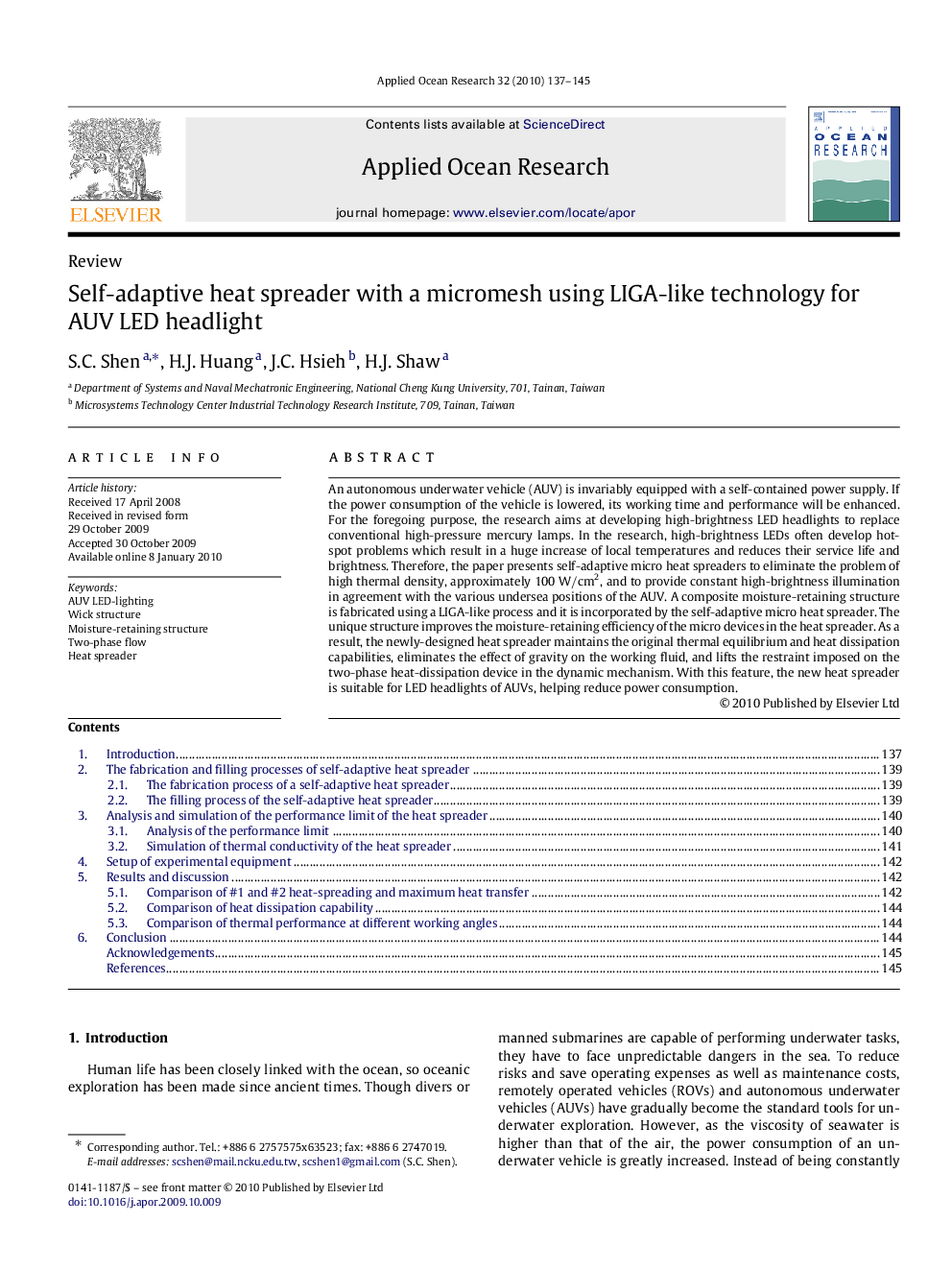| Article ID | Journal | Published Year | Pages | File Type |
|---|---|---|---|---|
| 1720193 | Applied Ocean Research | 2010 | 9 Pages |
An autonomous underwater vehicle (AUV) is invariably equipped with a self-contained power supply. If the power consumption of the vehicle is lowered, its working time and performance will be enhanced. For the foregoing purpose, the research aims at developing high-brightness LED headlights to replace conventional high-pressure mercury lamps. In the research, high-brightness LEDs often develop hot-spot problems which result in a huge increase of local temperatures and reduces their service life and brightness. Therefore, the paper presents self-adaptive micro heat spreaders to eliminate the problem of high thermal density, approximately 100 W/cm2, and to provide constant high-brightness illumination in agreement with the various undersea positions of the AUV. A composite moisture-retaining structure is fabricated using a LIGA-like process and it is incorporated by the self-adaptive micro heat spreader. The unique structure improves the moisture-retaining efficiency of the micro devices in the heat spreader. As a result, the newly-designed heat spreader maintains the original thermal equilibrium and heat dissipation capabilities, eliminates the effect of gravity on the working fluid, and lifts the restraint imposed on the two-phase heat-dissipation device in the dynamic mechanism. With this feature, the new heat spreader is suitable for LED headlights of AUVs, helping reduce power consumption.
